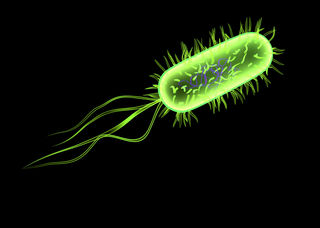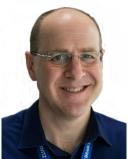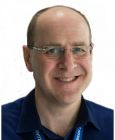Environment
Where Does Purpose Come From? (If the Universe Had None)
The intriguing scientific story of how purpose emerged in a random world.
Posted March 24, 2019

As a psychiatrist, much of the work I do involves helping people with various forms of disorders of motivation. In the absence of specific disorder, being motivated and purpose-driven is instinctive, though the intensity of this drive and how focused it is varies by temperament and circumstance.
Where does our natural sense of purpose come from?
In pre-scientific societies, the answer was obvious. Human purpose was defined and instilled by a god or gods—a higher power with a higher purpose. The scientific explanation is far more interesting, addressing the origin of life itself, and the evolution of consciousness.
Purpose emerged with the origin of life, long before consciousness evolved
The origin of purpose (or agency) is in many ways a more fundamental question that the origin of consciousness. A scientific understanding of purpose might, in fact, yield many clues to an understanding of consciousness, because consciousness can be understood as having evolved in the service of purposiveness.
Purposiveness (the quality of being purposeful or purpose-driven) is a characteristic of all living things, whether or not they possess a modicum of consciousness. Purposiveness emerged with life itself. It is part of what defines living creatures and is key to understanding how life arose in the first place. Living things have a purpose in that they strive toward some aim. That aim is to keep living and propagate themselves, and they “make an effort” toward that aim. Non-living things make no such effort.
Notice that characteristics like purpose, aim, and effort do not imply having consciousness or even a nervous system. Consciousness is an extension or outgrowth of purposiveness, enabling greater control and flexibility in the pursuit of aims.
Resisting entropy
Consider for a moment the huge philosophical implications if it could be shown exactly how purpose and complex order could emerge from a random universe, entirely spontaneously and unguided.
Things in the universe tend toward increasing states of disorder or entropy (dictated by the second law of thermodynamics). Living things have “figured out” ways of resisting that natural degeneration, temporarily—for the duration of their lifetime. How do they pull off this trick?
Evolution explains very well how life became increasingly complex and diverse. It elegantly explains how you can get from the simplest single-celled organisms to us, over the course of almost 4 billion years. Yet evolution does not explain the origin of life. How exactly life arose is still unknown. There are many promising theories.
One cogent theory, developed by Terry Deacon, a neuroanthropologist at the University of California, Berkeley, goes right to the heart of the question of how purpose could emerge from purposelessness. It focuses on how purpose could emerge from random chemical interactions.1 I hope here to help the reader understand in simpler terms what is otherwise quite a difficult theory and to help readers grasp the far-reaching philosophical implications of this kind of theory in informing a coherent and meaningful worldview.2
The earliest, most elementary life forms would have consisted of molecules assembling spontaneously. Many quite complex chemical structures can form spontaneously and passively—for example, crystal formation (think of snowflakes). But the structures formed from these kinds of passive chemical processes eventually end or break down. In contrast, for a chemical system to be considered an early form of life, it had to be able to actively perpetuate itself and keep on going for longer than would be expected of a passive chemical process. In other words, it had to have the ability to at least temporarily defy or outpace the second law of thermodynamics, the tendency for things to become disordered. It also had to make copies of itself. So what’s the trick to achieving this feat?
The trick is in the coupling of two kinds of passive chemical processes, constraining each other
If two kinds of passive chemical processes are combined in certain ways, they can constrain each other, preventing each other from ending. In so doing, the two passive processes actively perpetuate each other. The details of Deacon’s theory are not essential to our discussion and I won’t dwell on them here, but it basically involves chain reactions of chemical catalysts coupled with the formation of crystal shells. The crystal shell encloses the catalysts. The shell alternates between two phases—sometimes closed, sometimes open. When the shell is closed, it prevents the enclosed catalyst molecules from dissipating. When the shell opens, the released catalysts resume their natural chain reactions, which regenerate new shell molecules (and new catalysts), thereby preventing the shell from dissipating.
These reciprocal constraining chemical processes become permanently coupled with each other, preventing each other from ending, and perpetuating the system as a whole. Deacon calls this self-regenerating complex an autogen, and he proposes it could serve as a protocell—a primitive cell, from which gradually more complex cells could evolve under the influence of natural selection. The autogen, in Deacon’s view, is the earliest and most primitive form of a “self,” in the sense of being a self-contained system that has some “purpose.”
What is the autogen’s purpose? Simply to keep going, actively resisting its own degeneration, opposing the natural tendency toward increasing entropy or disorder.3
The second law of thermodynamics is the first law of life (and the first law of psychology)
Thus, purpose has entered the universe. The purpose that has emerged is the purpose of preventing degeneration—opposing the second law of thermodynamics. This is why it has been said that the second law of thermodynamics is the first law of life—the imperative to resist entropy4 (indeed, for the same reason, the second law of thermodynamics can also be said to be the first law of psychology5).
Living things are in this way purposeful, preventing their own death. When we do eventually die, the molecules in our cells fall into disarray because of a loss on the constraints on how they interact, so they become free to interact in many more disorganized ways than are possible in our constrained and tightly organized living cells.
Interpreting the environment, and the emergence of meaning and value
Deacon’s theory goes on to describe ways in which autogens become more complex, adjusting and responding to (“interpreting”) their environment, such as by incorporating chemicals from the environment that promote the autogen’s continued propagation.
For example, a simple bacterium can detect glucose in its environment, move toward the glucose and ingest it to convert it into energy. The bacterium’s detection and “interpretation” of the presence and usefulness of glucose in its environment is achieved through basic mechanistic pattern-recognition.
In this way, Deacon’s model provides insight into the physical and natural origins of intentional agents (with or without consciousness), and the emergence of meaning and value. According to the model, an intentional agent is a system that can interpret patterns as being about something of value to itself with respect to its environment (glucose means energy to the bacterium and is of value to it). The agent or organism forms an internal representation of something in the environment, and that representation has meaning and value to it, in the sense of being something recognized as good or bad for the organism. Remember, no consciousness is required at this level of purpose-driven functioning.
Symbolic representation, sense of self, and emotion
In humans, the interpretation of the environment encompasses much more complex pattern recognition involving symbols such as language (which is actually just comprised of higher-level representations of the physical environment).
Moreover, highly complex agents like us are consciously self-aware because our nervous system additionally forms self-referent representations of our own self, in a recursive feedback loop. We are a “strange loop” of representations in a reverberating circuit, as described by Douglas Hofstadter—sort of like reflections in a hall of mirrors.6
Also, higher animals like mammals have evolved emotions, which are themselves derived from more basic chemical reactions in simpler animals. Emotions guide and fuel motivation, further imbuing things with “value” (good or bad for survival).
In humans, purpose and meaning in life have become fabulously complexified and extravagantly elaborated, despite being fundamentally “about” survival and reproduction (analogous to peacock tails).2
Focus and willpower
Key to Deacon’s innovative way of thinking about the role of constraints in the emergence of purpose is the idea that purposive behavior is defined in large part by the prevention or absence of alternative courses or outcomes (in our earlier discussion it was the prevention of degeneration of the autogen). Scaled up to the complexity of human behavior, what makes us behave purposefully is the focused way in which we refrain from doing all the things other than pursuing our chief aims at the moment. We are goal-directed in our actions by virtue of the constraints our brains impose on the myriad other behaviors that we might otherwise engage in.
The ability to focus varies constitutionally between people (brains differ in their ability to constrain themselves; too much constraint can be a problem too, manifesting as inflexibility). Focus and willpower can be strengthened to some degree by practice, like athletic ability. And it can be aided by leveraging external constraints, like Odysseus telling his sailors to tie him to the mast so as not to steer their ship onto the rocks, lured by the seductive Sirens. Or in real life: Diverting part of your monthly paycheck to a retirement fund, hiring a personal trainer at the gym, having a deadline for a project, or disabling social media on your computer.
Willpower (or motivation, or purposiveness) is thus the ability to restrain oneself from alternative courses of action. It is the imposition of constraints to block the myriad alternative paths that, if followed, would lead to greater disorder. Free will is really “free-won’t.”7
References
1. For those readers up for a challenging but lucid read, I highly recommend Deacon’s book: Incomplete Nature: How Mind Emerged from Matter (New York: W. W. Norton, 2011). Alternatively, his collaborator Jeremy Sherman (a fellow Psychology Today blogger), has provided a more summarized and accessible version of the theory in his book Neither Ghost Nor Machine: The emergence and nature of selves (New York: Columbia University Press, 2017). Also explained by Jeremy in a YouTube video (and, for the attentionally challenged, an even more summarized short video).
2. In Finding Purpose in a Godless World: Why We Care Even If The Universe Doesn’t, I further examine the human view of purpose in a universe that, according to science, is entirely spontaneous and unguided. I explain how purpose, meaning and morality, like consciousness and absolutely everything else in existence, could plausibly have emerged and evolved unguided, bottom-up, in a spontaneous universe.
3. More specifically, the autogen's purpose is self-regeneration by means of self-repair, self-protection and self-reproduction. Deacon and Sherman define a self or motivated / purposeful entity as “a constraint that channels energy into work that regenerates the constraint.”
4. Michael Shermer, Heavens on Earth: The Scientific Search for the Afterlife, Immortality, and Utopia (New York: Henry Holt, 2018), pp. 245, 251.
5. Tooby, John, Leda Cosmides and H. Clark Barrett. 2003. “The second law of thermodynamics is the first law of psychology” Psychological bulletin 129 (6): 858-65.
6. Hofstadter, Douglas R. I Am a Strange Loop. New York: Basic Books, 2007. Of course, the hall of mirrors is just a simplistic and incomplete analogy, to provide an inkling into Hofstadter’s much more complex and interesting theory.
7. To the degree that it’s free at all.




